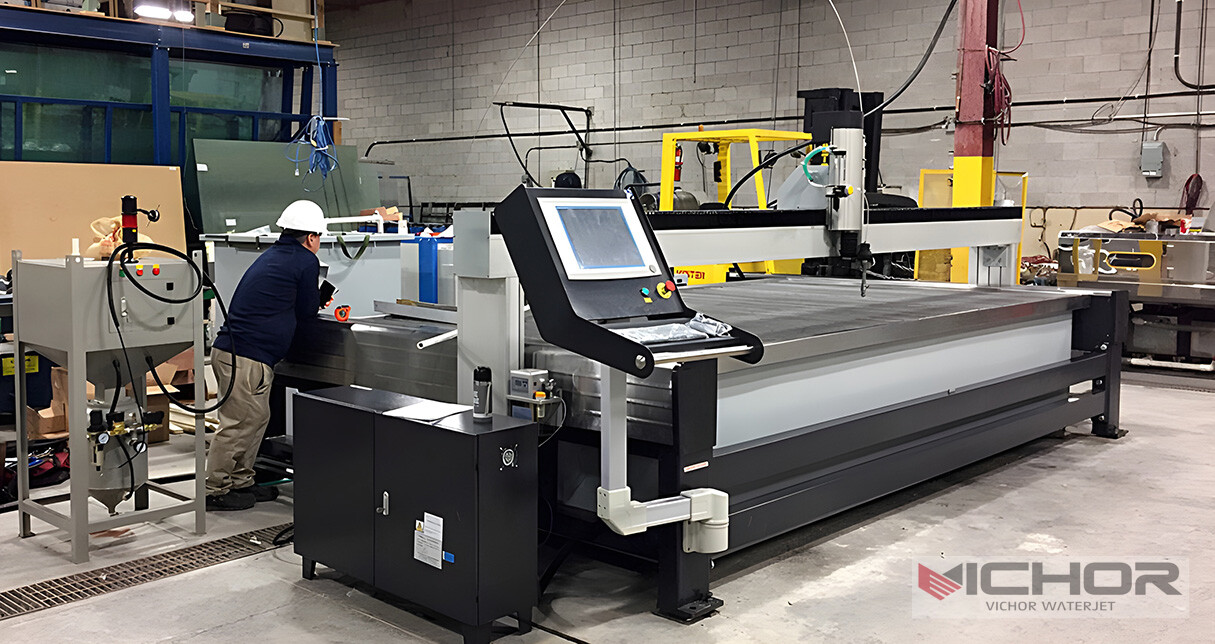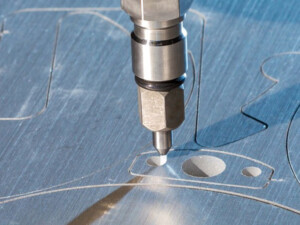
Compact Waterjet: The Complete Guide to Space-Saving Precision Cutting Power
In the demanding world of precision manufacturing, fabricators constantly seek solutions that deliver high performance without consuming valuable floor space or breaking the bank. Enter the Compact Waterjet. This innovative evolution of traditional waterjet technology is revolutionizing how shops of all sizes, from bustling job shops to specialized R&D labs, approach cutting complex materials. Offering remarkable versatility, precision, and efficiency in a significantly smaller footprint, the compact waterjet is more than just a scaled-down version; it’s a strategic advantage. This comprehensive guide explores the five key aspects that make compact waterjet systems an increasingly essential piece of modern manufacturing equipment.
1. Space Efficiency: The Defining Advantage of Compact Waterjet Systems
The most immediately apparent benefit of a compact waterjet is its dramatically reduced physical footprint. Traditional waterjet cutting machines, especially those with large cutting beds (like 5′ x 10′ or larger), demand substantial dedicated floor space. This includes not just the machine itself, but also the high-pressure pump unit, filtration systems, and necessary clearance for operation and maintenance.
Optimized Design: Compact waterjet manufacturers achieve space savings through intelligent engineering. This often involves integrating the high-pressure intensifier pump within or directly adjacent to the machine frame, minimizing hose runs and external components. Cutting envelopes are frequently optimized for common smaller part sizes (e.g., 2′ x 4′, 4′ x 4′, 3′ x 6′) that represent a significant portion of real-world jobs.
Lower Overhead: Reduced space requirements translate directly into lower facility costs. Shops can install a compact waterjet in areas previously deemed too small for industrial cutting equipment, freeing up larger bays for other processes. This is particularly valuable in urban settings, repurposed buildings, or crowded workshops where every square foot counts.
Easier Integration: The smaller size simplifies integrating a compact waterjet into existing production lines or placing it closer to upstream/downstream processes, reducing material handling time and improving workflow efficiency. Its accessibility also often makes operator interaction and part loading/unloading more ergonomic.
2. Cost-Effectiveness: Lowering the Barrier to Waterjet Technology
While traditional waterjets offer incredible capabilities, their initial capital investment and operational costs can be prohibitive for smaller businesses or those new to the technology. Compact waterjet systems address this challenge head-on.
Reduced Capital Investment: By design, compact waterjet machines typically require less raw material (steel, etc.) for their frame and enclosure. The integration of components like the pump and potentially simpler filtration systems also contributes to a lower upfront purchase price compared to their larger counterparts with equivalent pressure capabilities.

Lower Operating Costs: Smaller cutting envelopes inherently require less abrasive garnet per job for many common part sizes. The integrated pump designs in many compact waterjet models are often highly efficient, potentially consuming less electricity, especially during idle times. Reduced space also means lower associated heating/cooling or facility costs.
Faster ROI: The combination of lower initial investment, potentially reduced consumable usage (especially garnet), and the ability to take on a wide variety of profitable small-batch or prototype work allows shops to achieve a faster return on investment (ROI) with a compact waterjet. They open the door to waterjet profitability for businesses that couldn’t previously justify the cost of a large system.
3. Uncompromised Material Versatility: Cutting (Almost) Anything, Anywhere
Don’t let the “compact” name fool you. A compact waterjet retains the core superpower of waterjet technology: the ability to cut an astonishingly wide range of materials with precision and without generating a Heat-Affected Zone (HAZ).
Cold Cutting Principle: Like all waterjets, compact waterjet systems utilize a high-velocity stream of water (often mixed with abrasive garnet) to erode material. This pure mechanical process generates no significant heat, preventing melting, warping, hardening, or toxic fumes associated with thermal cutting methods (laser, plasma, EDM). This is crucial for heat-sensitive materials and composites.
Broad Material Compatibility: A compact waterjet excels at cutting metals (stainless steel, aluminum, titanium, tool steel, brass, copper), stone, tile, glass, ceramics, composites (carbon fiber, fiberglass), rubber, plastics (including thick and laminated types), foam, food products, and more. This makes it an incredibly flexible “one-stop” cutting solution, even within a smaller shop.
No Material Hardness Limitation: Waterjet cutting effectiveness isn’t hindered by material hardness. A compact waterjet cuts hardened tool steel or titanium as effectively as it cuts soft aluminum or foam, relying purely on the abrasive action. This versatility is unmatched by many other compact cutting technologies.
4. Precision and Edge Quality: Delivering High-Accuracy Results
Precision is paramount in modern manufacturing. Compact waterjet systems are engineered to deliver accuracy and edge quality that meets or exceeds the demands of intricate parts and tight tolerances.
Advanced Motion Control: Modern compact waterjet machines utilize precision linear guides, high-performance servo motors, and sophisticated CNC controls. This ensures smooth, accurate motion and the ability to achieve tight tolerances, often within +/- 0.003″ to +/- 0.005″ (0.076mm to 0.127mm) or better, depending on the machine and material.
Minimal Kerf Taper & High Edge Quality: While some taper is inherent in waterjet cutting (wider at the top than the bottom), modern cutting heads, precise nozzle alignment, and optimized cutting parameters on a compact waterjet minimize this effect. The resulting edges are typically smooth and require little to no secondary finishing for many applications, especially when using fine abrasives and slower cutting speeds for critical features.
Intricate Detail Capability: The small, focused stream (typically 0.030″ to 0.050″ / 0.76mm to 1.27mm diameter with abrasive) allows compact waterjet systems to produce very fine details, sharp inside corners, and complex contours that would be difficult or impossible with bulkier thermal processes or mechanical methods. This is ideal for prototypes, intricate components, and decorative work.
5. Ease of Use and Operational Flexibility
Modern compact waterjet systems are designed with user-friendliness and operational efficiency in mind, making them accessible even to shops without extensive waterjet experience.
Simplified Setup & Operation: Many compact waterjet models feature intuitive touchscreen interfaces with pre-loaded cutting parameters for common materials, simplifying setup. Integrated pump controls and automated functions (like abrasive metering and water level management on some models) reduce manual tasks and the potential for operator error. Their smaller size often makes routine maintenance tasks more accessible.
Quick Job Changeover: The ability to rapidly switch between different materials and jobs is crucial for job shops handling diverse orders. Compact waterjet systems, with their streamlined design and often faster pump startup/shutdown sequences (compared to some large, complex pumps), facilitate quicker transitions between jobs, boosting overall equipment effectiveness (OEE).
Software Integration: Compact waterjet systems utilize the same powerful CAD/CAM software as larger machines. This allows for easy design importation, nesting optimization to maximize material utilization on the smaller bed, path simulation, and seamless generation of cutting programs. The software handles the complexity of taper compensation and speed control.
Ideal for Prototyping and Low-Volume Production: The combination of quick setup, minimal fixturing requirements (material is often simply held down by water weight or light clamps), and the ability to cut virtually any material makes the compact waterjet perfect for rapid prototyping, one-off custom parts, and low-to-medium volume production runs. It provides immense flexibility without dedicated tooling.
The compact waterjet is far more than just a smaller alternative. It represents a significant technological advancement, strategically designed to deliver the core benefits of waterjet cutting – cold cutting, unmatched material versatility, high precision, and excellent edge quality – within the spatial and budgetary constraints of a much wider range of manufacturing environments. By excelling in space efficiency, cost-effectiveness, material versatility, precision, and operational ease, compact waterjet systems empower small job shops, specialized manufacturers, R&D departments, and even educational institutions to leverage this powerful technology. They lower the barrier to entry, accelerate ROI, and provide the flexibility needed to respond quickly to diverse customer demands. As technology continues to advance, the capabilities and efficiency of the compact waterjet will only increase, solidifying its position as an indispensable tool for agile and competitive modern manufacturing. Investing in a compact waterjet isn’t just about saving space; it’s about gaining a powerful, versatile, and strategic cutting solution that drives productivity and opens new doors for business growth.
continue reading



